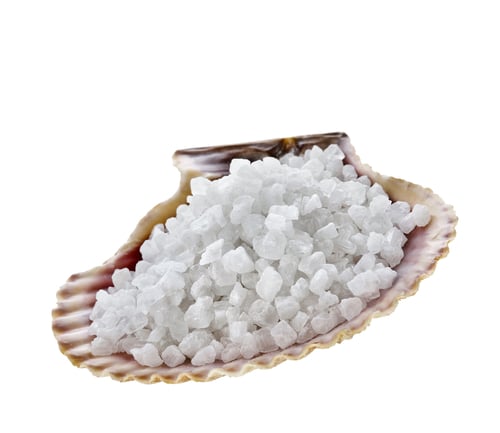 Salt adds flavor to food. That’s why so many processed foods and foods you order at restaurants have so much of it. You need a certain amount of sodium in your diet to maintain your body’s fluid balance, for muscle contraction and normal nerve function. Unfortunately, most people get much more than they need. One reason too much salt is bad is that it alters the ability of the inner lining of blood vessels to expand to increase blood flow, a phenomenon called endothelial dysfunction. Endothelial dysfunction seems is a precursor to hypertension and heart disease.
Salt adds flavor to food. That’s why so many processed foods and foods you order at restaurants have so much of it. You need a certain amount of sodium in your diet to maintain your body’s fluid balance, for muscle contraction and normal nerve function. Unfortunately, most people get much more than they need. One reason too much salt is bad is that it alters the ability of the inner lining of blood vessels to expand to increase blood flow, a phenomenon called endothelial dysfunction. Endothelial dysfunction seems is a precursor to hypertension and heart disease.
Some people try to reign in their salt intake by switching to sea salt because they think it’s lower in sodium than regular salt. Unfortunately, a new study shows that sea salt offers few advantages when it comes to lowering dietary sodium.
Sea Salt: Is It Lower in Sodium?
Before sprinkling your next entrée with sea salt, consider this. A new study published in Food Research International found that sea salt is no lower in sodium than table salt, although one type of sea salt called True Kona had 17% less sodium than the kosher salt they used as a control. But on the whole, sea salt is not significantly lower in sodium, and it’s more expensive than table salt.
Table Salt Versus Sea Salt: Are There Other Benefits to Switching to Sea Salt?
Some people point out that sea salt has a more pronounced flavor, so you may use less of it. This study also looked at this issue and found, contrary to popular belief, sea salt has about the same taste intensity as kosher salt.
What about the additional minerals in sea salt? Sea salt does contain trace levels of minerals like potassium, magnesium, bicarbonate, and calcium that aren’t present in table salt, but they’re in such small amounts that it’s unlikely to have any real impact on your body’s mineral stores.
Table salt is more processed than sea salt, and it contains additives including an anti-clumping agent, but, more importantly, it contains iodine. Iodine is essential for the production of thyroid hormone, a hormone that keeps your metabolism humming along.
One reason iodine deficiency is no longer prevalent is that iodine is routinely added to table salt. In other countries of the world where iodine deficiency is more common, there’s a higher incidence of mental retardation and growth retardation among infants born to moms who are iodine deficient. With the exception of some fish, eggs and dairy products, there aren’t a lot of good food sources of iodine. If you switch to sea salt you’re losing a good source of iodine.
Other Ways to Reduce Sodium in Your Diet
Since switching to sea salt won’t significantly lower the amount of sodium in your diet, it may not be worth the additional cost. Plus, there’s the iodine issue to consider. The best way to lower sodium in your diet is to eliminate packaged and processed foods since they’re the largest source of dietary sodium for most people.
If you buy packaged foods, always read the label. Some foods are unexpectedly high in sodium. You might expect potato chips and snack foods to be at the top of the list, but bread is a bigger source of sodium in the American diet because people eat so much of it. Canned soup, condiments, processed meats, and cottage cheese also contain significant amounts of sodium.
It’s nice to let someone else do the cooking, but when you visit a restaurant, you may get a day’s worth of sodium in one entrée. Fortunately, more restaurants are publishing nutritional information online so you can be a more informed consumer.
Another option? Skip the sea salt entirely. When you’re tempted to sprinkle salt on your food, use a salt-free herb and spice blend instead. Many spices and herbs are high in antioxidants so you’ll get additional health benefits as well.
The Bottom Line?
Sea salt may sound like a healthier alternative, but there are better ways to lower your sodium intake. Cut back on restaurant foods, packaged foods and fill your salt shaker with a blend of herbs and spices instead.
References:
Circulation 2012; DOI:10.1161/circulationaha.112.096115.
Medscape.com “Iodine Deficiency”
Food Navigator. “Sea Salt Not a Viable Sodium Reduction Strategy: New Data”
Related Articles By Cathe:
How Does Sea Salt Differ from Table Salt?
Does a High-Sodium Diet Increase the Risk of Heart Disease?

